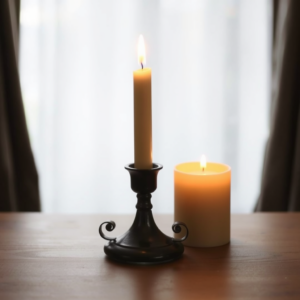
Although candles appear to be harmless, the statistics tell a different story. According to the National Fire Protection Association (NFPA), there are approximately 21 residential fires every day in the U.S. caused by candle house fires. Therefore, this large number is a critical reminder for everyone to be conscious and take caution. The period between the years 2014-2018 saw a shocking estimation of 7,600 home structure fires each year that were linked to candle use. This resulted in 81 fatalities and 677 injuries with direct property damage amounting to an astounding $278 million annually. Most of these fires start from bedrooms, living rooms and bathrooms which are often areas where candles are used.
Common Causes of Candle Fires and How They Can Be Prevented
The leading causes of candle fires include:
- Leaving candles unattended – Always turn off candles before leaving the room, or before going to sleep.
- Placing candles near flammable objects – In order to avoid any fire hazards, you need to keep your candles at least one foot away from things that can easily burn like papers, furniture and curtains.
- Using candles in poorly ventilated areas – Ensure proper ventilation to avoid a buildup of heat or smoke.
By adhering to these guidelines, you can significantly reduce the risk of candle-related fires in your home.
Understanding Candle Safety
Understanding the safe use of candles is crucial for preventing accidents and safeguarding your home from candle house fires. Below are some important guidelines to adhere to:
Guidelines for Safe Candle Usage at Home
- Trim the Wick – It is essential to trim the wick to a length of ¼ inch prior to lighting. Wicks that are too long or uneven may result in irregular burning and dripping.
- Use Candle Snuffers – Extinguishing candles with snuffers reduces the risk of hot wax splashing.
- Avoid Drafts – It is advisable to position candles away from drafts, ventilation systems, and fans in order to avoid accelerated burning or sudden flare-ups.
Candle Alternatives
Let’s say you’re worried about conventional candle hazards, then you can opt for better and safer alternatives which can still give you a similar ambiance.
Safe Alternatives to Traditional Candles
- Battery-Operated Candles – These flameless options mimic the glow of real candles without the fire risk.
- LED Candles – LED candles present a range of designs and hues, establishing a warm ambiance without the necessity of an open flame.
Steps to Take in the Event of a Candle-Related Incident
In the event of a candle house fires, it is crucial to respond swiftly.
- Extinguish the Fire – Use a fire extinguisher, baking soda, or a wet cloth to put out small flames.
- Evacuate – Ensure everyone leaves the house safely and gathers at a pre-determined meeting spot.
- Call Emergency Services – Contact the fire department immediately, even if the fire appears to be out.
Options and Solutions for Fire-Damaged Homes from Candle Fires
Selling homes that have been affected by fires may be a possible choice because they could still hold some worth. There are specific buyers who focus on buying and refurbishing houses destroyed by fire. Usually, these people buy the homes in their original state. It is important to disclose everything about the damage when selling such houses. It may help to seek out a property professional who buys fire damaged homes since they will know where to find clients and what price to propose for it.
Conclusion
It is very critical that the safety of candles should be observed in order to ensure the paramount of security for homes and family members. This is mainly because although candles make the atmosphere warmer, they can also cause fire outbreaks due to improper use. If you wish to have some candles that are safe, you must place them far from anything that can catch fire, never leave them alone and use holders that can’t easily tip over. There are other options such as LED candles or flameless luminaries which have the same soft light but they do not catch fire which makes them more secure than real ones.
Homeowners facing the challenge of fire-damaged properties have several viable options at their disposal. Such homes can retain value, and there are buyers who focus on acquiring them for renovation purposes, often in their current condition. It is crucial to maintain transparency regarding the extent of the damage and to collaborate with an experienced real estate agent to secure a fair price. Alternatively, homeowners may consider repairing the damage, which could enhance the property’s market value. Engaging with restoration professionals and obtaining precise estimates for repair costs are vital steps in making well-informed decisions. Regardless of whether you decide to sell or repair, comprehending your options and taking proactive steps will enable you to proceed with confidence following a fire incident
Previous